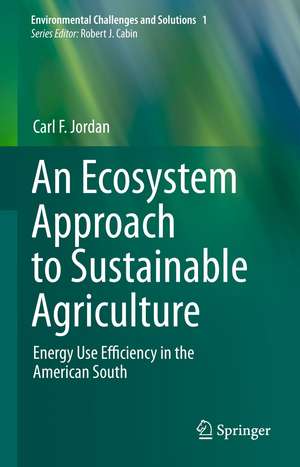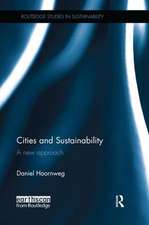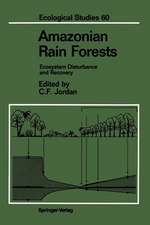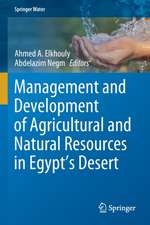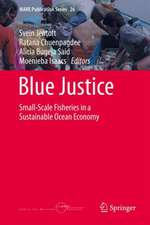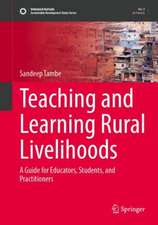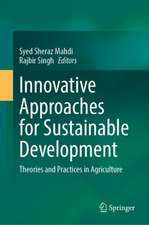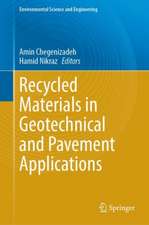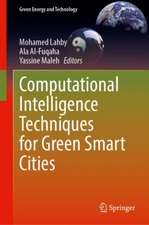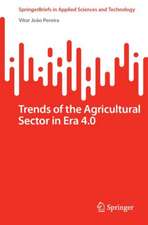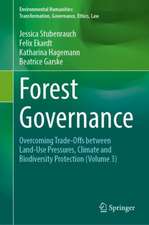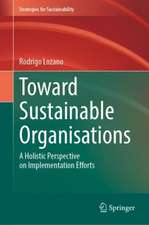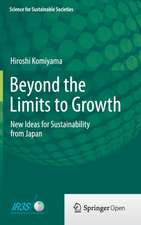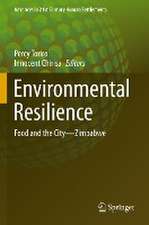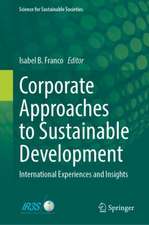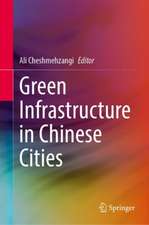An Ecosystem Approach to Sustainable Agriculture: Energy Use Efficiency in the American South: Environmental Challenges and Solutions, cartea 1
Autor Carl F. Jordanen Limba Engleză Paperback – 18 iun 2015
| Toate formatele și edițiile | Preț | Express |
|---|---|---|
| Paperback (1) | 638.76 lei 43-57 zile | |
| SPRINGER NETHERLANDS – 18 iun 2015 | 638.76 lei 43-57 zile | |
| Hardback (1) | 648.89 lei 43-57 zile | |
| SPRINGER NETHERLANDS – 3 iun 2013 | 648.89 lei 43-57 zile |
Preț: 638.76 lei
Preț vechi: 751.47 lei
-15% Nou
Puncte Express: 958
Preț estimativ în valută:
122.22€ • 127.96$ • 101.13£
122.22€ • 127.96$ • 101.13£
Carte tipărită la comandă
Livrare economică 07-21 aprilie
Preluare comenzi: 021 569.72.76
Specificații
ISBN-13: 9789400797178
ISBN-10: 9400797176
Pagini: 264
Ilustrații: XVI, 247 p.
Dimensiuni: 155 x 235 x 14 mm
Greutate: 0.37 kg
Ediția:2013
Editura: SPRINGER NETHERLANDS
Colecția Springer
Seria Environmental Challenges and Solutions
Locul publicării:Dordrecht, Netherlands
ISBN-10: 9400797176
Pagini: 264
Ilustrații: XVI, 247 p.
Dimensiuni: 155 x 235 x 14 mm
Greutate: 0.37 kg
Ediția:2013
Editura: SPRINGER NETHERLANDS
Colecția Springer
Seria Environmental Challenges and Solutions
Locul publicării:Dordrecht, Netherlands
Public țintă
GraduateCuprins
A Systems (Holistic) Approach to Sustainable Agriculture.- A History of Unsustainability in Agriculture.- Political and Economic Challenges to Creating a Sustainable Agriculture.- Energetic Services of Nature That Increase Agricultural Sustainability.- Applied Tools and Practices For Sustainable Agriculture.- An Economic, Ecological, and Cultural Evaluation of Agriculture in The American South.- Case Studies of Contemporary, Sustainable Farms in the South.- Holism vs. Reductionism in Agricultural Science.- Appendices.
Textul de pe ultima copertă
For economic reasons, farmers generally strive to maximize short-term agricultural yield (energy output) through energy subsidies in the form of fertilizers and pesticides. When these subsidies are used inefficiently they result in water and air pollution, soil erosion, extinction of beneficial insects, spread of disease, and disappearance of ground water reservoirs.
The key to agricultural sustainability lies in understanding how the whole system – not just the parts – reacts to impacts resulting from energy subsidies. Because of the pollution (wasted energy) from excessive subsidies, and the increasing scarcity and cost of non-renewable energy subsidies, the most critical ecosystem property that affects sustainability is energy use efficiency, that is, energy output (yield) per unit energy input (subsidy). Increasing the energy use efficiency in agriculture may cause a decrease in gross energy output, but it results in greater net energy output. Any decline in yield from increasing energy efficiency is compensated for by decreased costs of energy inputs and pollution clean-up costs. The net result is greater long-term profit and greater agricultural sustainability.
The holistic approach to agricultural sustainability points the way toward techniques to manage farms more sustainably. It shows how substituting the services of nature – from nitrogen fixation to natural pest controls – for petroleum-based subsidies can help to achieve greater energy use efficiency. Framing solutions to agricultural problems in terms of ecosystem properties, and how solutions based on such an understanding have worked in the American South, are the basis for this book. While the focus is on this region, lessons learned from the Southern experience can be applied worldwide, thus providing alternatives to unsustainable practices. Concepts are reinforced by numerous case studies, applied tools, andexamples.
The key to agricultural sustainability lies in understanding how the whole system – not just the parts – reacts to impacts resulting from energy subsidies. Because of the pollution (wasted energy) from excessive subsidies, and the increasing scarcity and cost of non-renewable energy subsidies, the most critical ecosystem property that affects sustainability is energy use efficiency, that is, energy output (yield) per unit energy input (subsidy). Increasing the energy use efficiency in agriculture may cause a decrease in gross energy output, but it results in greater net energy output. Any decline in yield from increasing energy efficiency is compensated for by decreased costs of energy inputs and pollution clean-up costs. The net result is greater long-term profit and greater agricultural sustainability.
The holistic approach to agricultural sustainability points the way toward techniques to manage farms more sustainably. It shows how substituting the services of nature – from nitrogen fixation to natural pest controls – for petroleum-based subsidies can help to achieve greater energy use efficiency. Framing solutions to agricultural problems in terms of ecosystem properties, and how solutions based on such an understanding have worked in the American South, are the basis for this book. While the focus is on this region, lessons learned from the Southern experience can be applied worldwide, thus providing alternatives to unsustainable practices. Concepts are reinforced by numerous case studies, applied tools, andexamples.
Caracteristici
Takes a systems (holistic) approach to sustainable agriculture Lessons learned from this region can be applied worldwide Applied tools and practices for sustainable agriculture are described Provides rich historical background Illustrates the energy use efficiency when substituting services of nature for non-renewable energy sources
